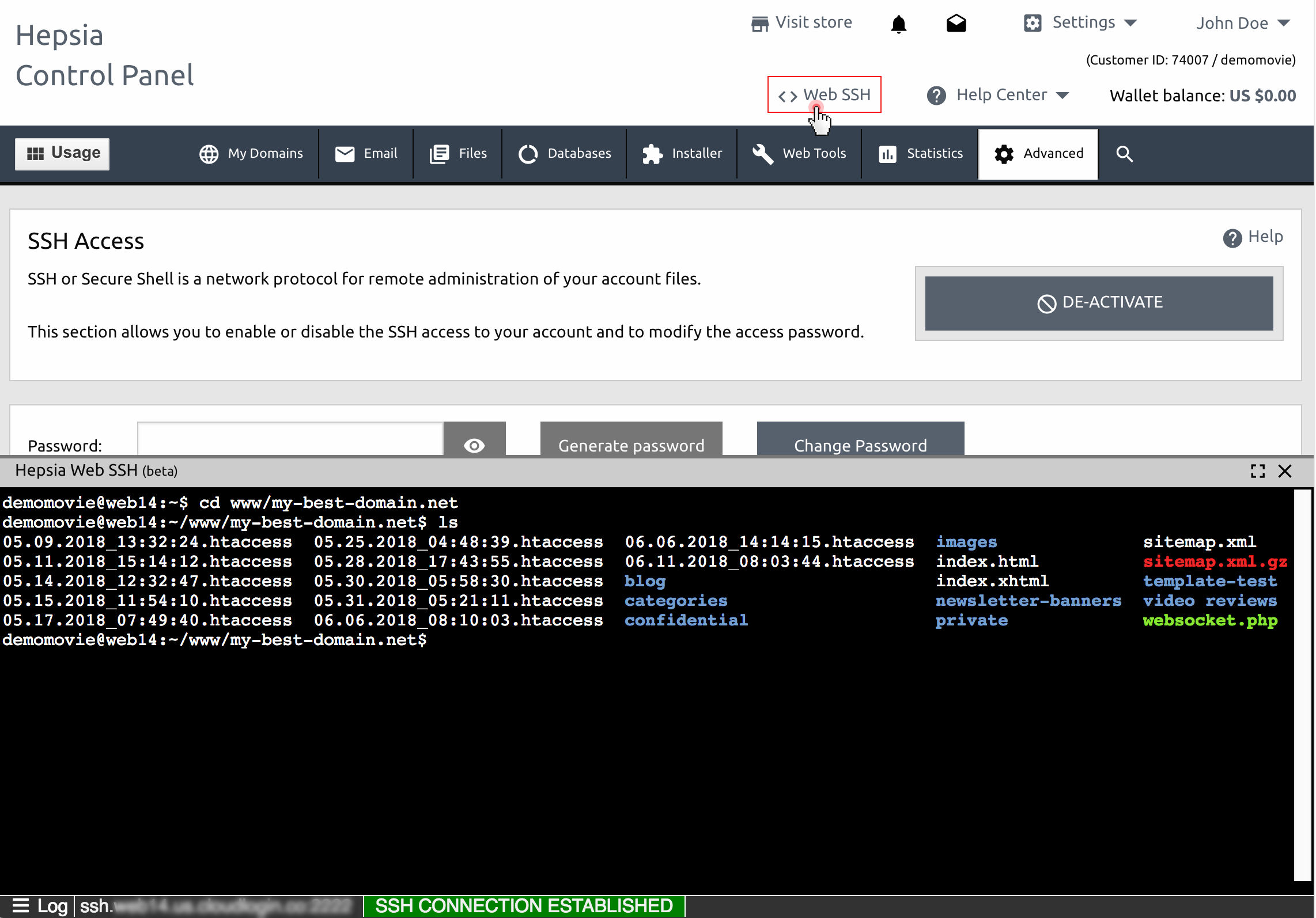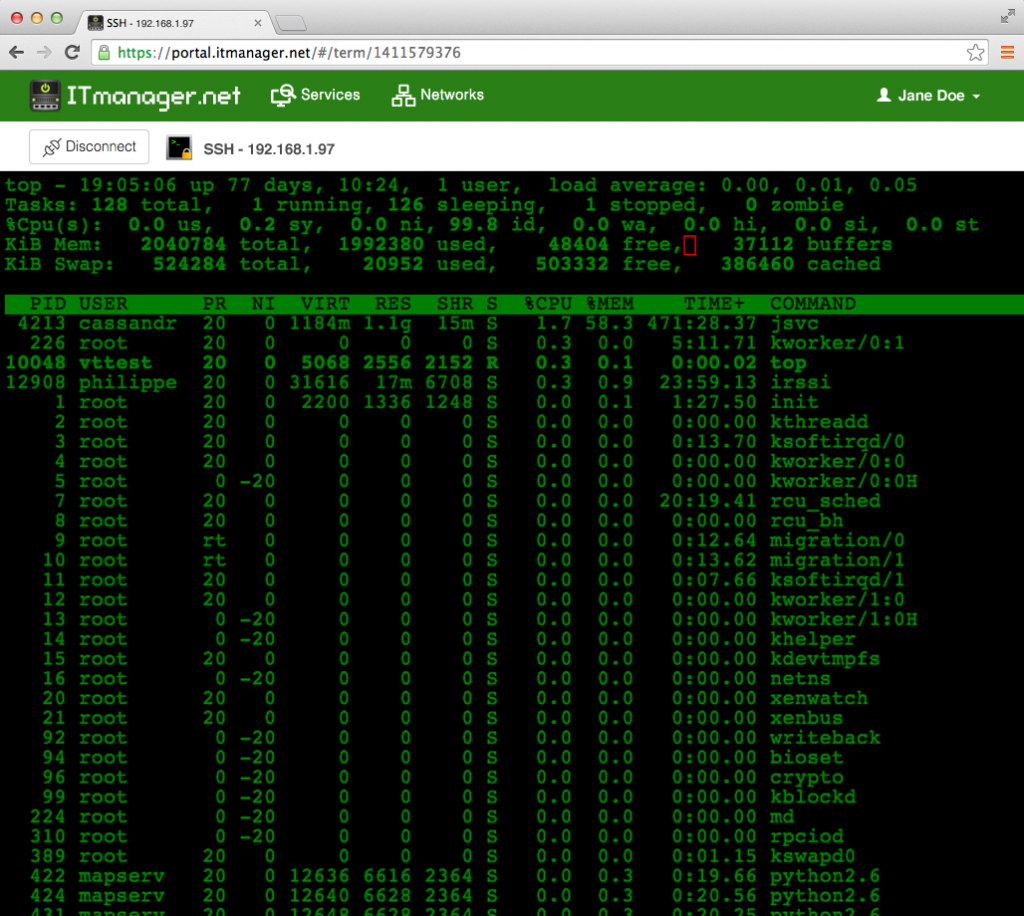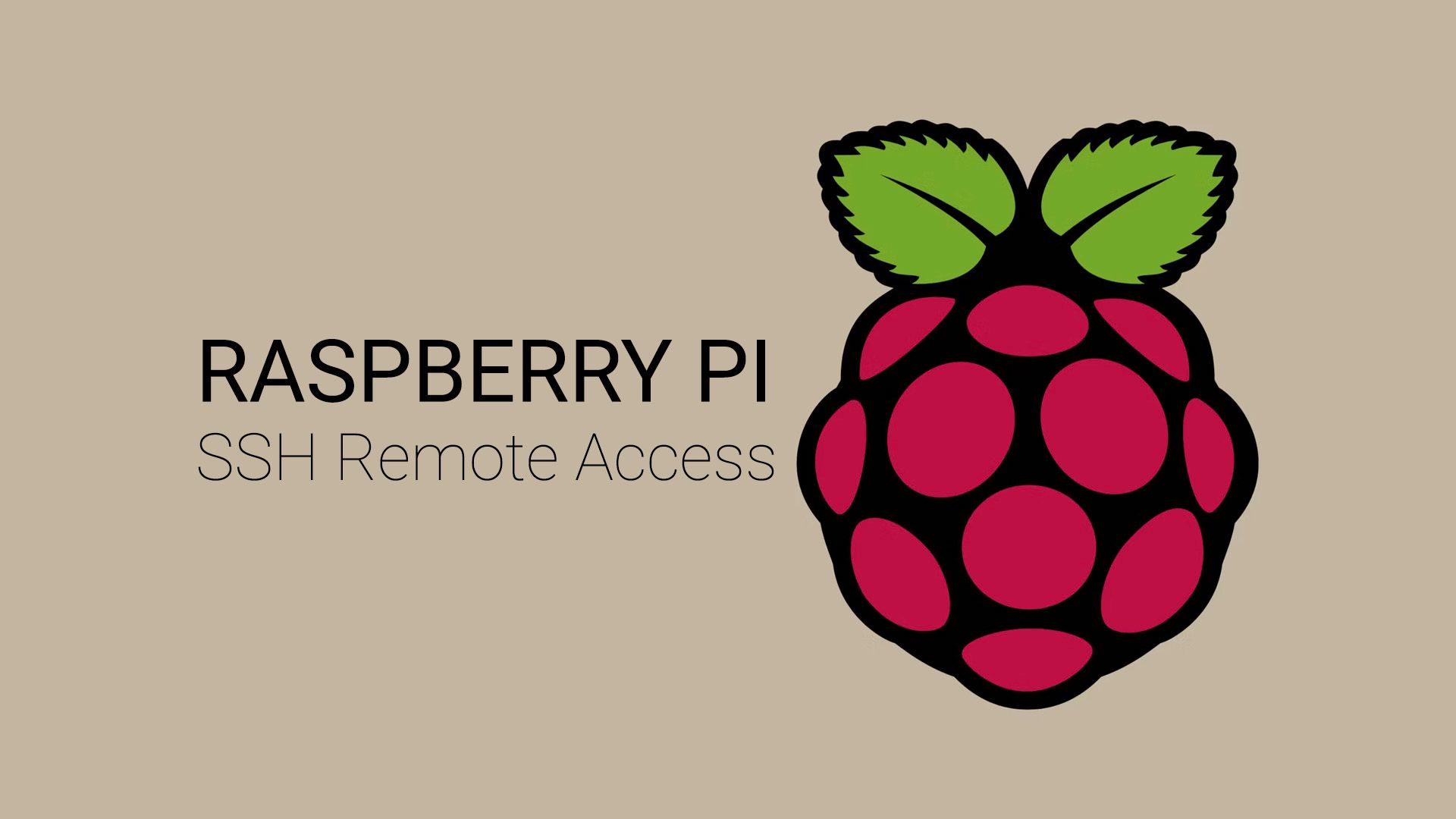Mastering Your Devices: A Practical Remoteiot Web Ssh Example For Easy Access
Managing devices that are far away, like those tiny sensors out in the field or the smart gadgets tucked away in a distant factory, can feel a bit like trying to talk to someone across a very busy room, you know? It's not always simple to get a clear connection, and when something needs a quick fix, getting there in person just isn't always an option. This challenge, frankly, is something many folks working with connected tech face every day, and it can really slow things down.
That's where a clever approach comes in, one that makes keeping an eye on your remote internet-connected things a whole lot easier. We're talking about using a web-based SSH connection, a really neat way to talk directly to your devices through your web browser, no matter where you are. It's about bringing the control right to your fingertips, which is pretty handy, as a matter of fact.
This article will walk you through what a remoteiot web ssh example looks like, why it's such a helpful tool for keeping your internet-connected setups running smoothly, and how you can get started with it. We'll explore how it helps you stay connected and troubleshoot without having to pack a bag or drive for hours, making your life, in a way, just a bit simpler.
- Lily Phillips 101 Challenge Video
- Goob From Meet The Robinsons
- What Does Wap Mean
- Taper Fade Black Men
- Just Give Me My Money
Table of Contents
- What is Remote IoT Web SSH?
- Why is Web SSH a Good Fit for IoT?
- A Simple remoteiot web ssh example Scenario
- Key Considerations for Your Setup
- FAQ About Remote IoT Web SSH
What is Remote IoT Web SSH?
So, what exactly are we talking about when we say "remote IoT web SSH"? Well, it's pretty much what it sounds like, you know? SSH, or Secure Shell, is a way to get into a computer or device from afar, giving you a command-line interface as if you were sitting right in front of it. When we add "web" to that, it means you're doing all of this directly through your internet browser, like Chrome or Firefox, which is rather convenient.
For internet-connected devices, or "IoT" gadgets as they're often called, this means you can send commands, check on things, and even fix problems without ever having to leave your desk. Imagine you have a weather sensor out in a field, collecting data. If it stops sending information, you could, perhaps, just open a tab in your browser, connect to it, and see what's going on, which is a significant improvement over driving out there.
This setup usually involves a small piece of software on your internet-connected device that allows it to connect to a web-based SSH server, or sometimes a service that acts as a middleman. This service then lets you, the user, log in through a secure web portal. It's a bit like having a remote control for your devices, but one that works over the internet and keeps everything very safe, too it's almost magic.
- The Voice Winner 2025
- La Casa De Los Famosos Vota
- Do A Barrel Barrel Roll
- Highest Block Blast Score
- Business Class Vs First Class
Why is Web SSH a Good Fit for IoT?
There are several compelling reasons why using web SSH for your internet-connected devices just makes a lot of sense, especially in today's world where everything needs to be connected and accessible. It addresses some common headaches, actually, that people face when managing many devices scattered far and wide.
Ease of Access
One of the biggest perks is how easy it is to get to your devices. Think about it: all you really need is an internet connection and a web browser, and you're good to go. You don't have to install any special software on your own computer, which means you can access your internet-connected devices from pretty much anywhere, whether you're at the office, at home, or even, perhaps, on the go. This flexibility is truly a great thing.
This simplicity means less fuss for you and your team. There's no need to worry about different operating systems or complex network setups on the user's end. Just open a tab, log in, and you're connected. It's a bit like having a universal remote for all your gadgets, making life, you know, a good deal less complicated.
Enhanced Security
Security is, quite naturally, a huge concern when you're talking about devices connected to the internet. Web SSH services often come with built-in security features that make things much safer than just opening up ports on your network. They typically use strong encryption for all communications, meaning your data stays private and protected from prying eyes, which is very important.
Many of these services also offer things like multi-factor authentication, where you need more than just a password to log in, adding an extra layer of protection. Some even allow for fine-grained access control, so you can decide exactly who can do what on which device. This helps keep your internet-connected ecosystem secure, which is, honestly, a top priority for everyone.
Troubleshooting from Anywhere
When an internet-connected device starts acting up, you need to figure out what's wrong quickly. With web SSH, you can jump right into the device's command line and run diagnostic tests, check log files, or even restart services, all from your browser. This saves a tremendous amount of time and effort, especially if the device is in a hard-to-reach location, which they often are.
Imagine a sensor in a remote agricultural setting. If it stops sending data, you can log in, check its network connection, look at its software processes, and maybe even update its firmware, all without driving out to the farm. This ability to troubleshoot remotely means less downtime and happier operations, which is, in a way, pretty vital for business continuity.
Reduced Infrastructure
Setting up and maintaining traditional remote access solutions can sometimes be a bit of a headache, requiring dedicated servers, VPNs, and complex network configurations. Web SSH, particularly when using a cloud-based service, can significantly cut down on the infrastructure you need to manage yourself. The service provider handles a lot of the heavy lifting, which is quite helpful.
This means lower operational costs and less technical overhead for your team. You don't have to worry about server maintenance, security updates for your access points, or scaling issues as your number of internet-connected devices grows. It's a more streamlined approach that, you know, just simplifies things considerably.
A Simple remoteiot web ssh example Scenario
Let's walk through a very basic remoteiot web ssh example to give you a clearer picture of how this might work in a real-world setting. Imagine you have a small Raspberry Pi acting as a data logger in a remote cabin, collecting temperature readings. You need to check on it, perhaps update its logging script, but you're hundreds of miles away. This is where web SSH shines, obviously.
Setting Up
First, on your Raspberry Pi, you'd typically install a small agent or client software that allows it to connect to a web SSH service. This isn't usually too difficult; many services provide straightforward instructions, often just a few commands to run in the Pi's terminal. This agent creates an outbound connection from the Pi to the web SSH service, which is a bit like the Pi calling home, in a way.
This outbound connection is a key security feature, as it means you don't have to open any incoming ports on the Pi's network, which could be a security risk. The Pi initiates the connection, and the web SSH service then acts as a secure bridge. It's a pretty smart setup, actually, keeping things safe while allowing access.
Connecting
Once the agent is running on your Raspberry Pi and connected to the web SSH service, you can then go to the service's website on your computer or even your phone. You'll log in with your credentials, perhaps using two-factor authentication for extra security. From your dashboard on the website, you'll see your Raspberry Pi listed as an available device, which is rather convenient.
With a simple click on the device's name, a terminal window will appear right there in your web browser. This window is your direct connection to the Raspberry Pi, giving you full command-line access. It's almost like having the Pi right in front of you, just without the physical presence, which is quite a powerful thing, you know?
What You Can Do
Now that you're connected, the possibilities are pretty broad. You can, for instance, check the temperature readings the Pi has collected by looking at its log files. You could update the script that collects the data, maybe to add a new sensor or change the logging interval. If the Pi's software is out of date, you could run `sudo apt update` and `sudo apt upgrade` right from your browser to get it current, which is really useful.
You could even troubleshoot network issues, restart services that might have crashed, or install new software packages. All of these tasks, which would otherwise require a physical visit or a more complex VPN setup, are now simple command-line entries in your web browser. It offers a level of control and convenience that, frankly, transforms how you manage your remote internet-connected devices.
Key Considerations for Your Setup
While a remoteiot web ssh example offers a lot of advantages, there are some important things to keep in mind when you're setting it up and using it. Thinking about these points beforehand can save you a lot of trouble down the line, which is always a good idea, you know?
Security Best Practices
Even though web SSH services often come with strong security, you still have a role to play in keeping things safe. Always use very strong, unique passwords for your web SSH account, and definitely enable multi-factor authentication if it's available. It's an extra step, but it adds a significant layer of protection, which is pretty important these days.
Also, make sure the web SSH service you choose has a good reputation for security and regular updates. Keep the software on your internet-connected devices, including the SSH agent, up to date to patch any known vulnerabilities. Limiting access to only those who absolutely need it and using the principle of least privilege are also, you know, very smart moves.
Network Configuration
While web SSH often simplifies network setup by using outbound connections, you'll still want to make sure your internet-connected devices have reliable internet access. If the device's network connection is spotty, your web SSH session will be too. Consider using a stable Wi-Fi connection or, even better, an Ethernet connection if available for critical devices, which can really help.
For devices in very remote areas, cellular modems are often used, and ensuring a good signal strength for those is vital. Also, be aware of any data limits if you're using cellular, as continuous SSH sessions could, perhaps, consume more data than you expect, so that's something to watch out for.
Choosing a Platform
There are several web SSH services and platforms out there, each with its own features, pricing models, and levels of support. Some are designed specifically for internet-connected devices, offering additional device management features beyond just SSH access. Others are more general-purpose, offering SSH as one of many remote access tools, which is worth noting.
Take some time to research different options and pick one that best fits your needs, your budget, and the scale of your internet-connected deployment. Consider things like ease of setup, security features, reliability, and customer support. A good choice here can make a world of difference in your day-to-day operations, which is, you know, pretty essential.
FAQ About Remote IoT Web SSH
People often have questions about how remote IoT web SSH works and what it means for their devices. Here are a few common ones, which are, you know, quite relevant.
Is remote web SSH truly secure for my internet-connected devices?
Yes, when set up correctly and used with a reputable service, it can be very secure. Most services use strong encryption, and because the connection is often initiated from the internet-connected device itself (outbound), it reduces the need to open incoming ports on your network, which is a significant security benefit, frankly.
Do I need to install special software on my computer to use web SSH?
No, that's one of its main advantages! You typically only need a standard web browser like Chrome, Firefox, or Edge. The necessary software (an agent) is installed on your internet-connected device, and the web SSH service handles the rest, making it very convenient, you know?
Can I manage any type of internet-connected device with web SSH?
Generally, if your internet-connected device runs an operating system that supports SSH (like Linux, which is common on many IoT devices like Raspberry Pi or BeagleBone Black), and you can install the required agent software on it, then yes, you can likely manage it with web SSH. Devices with very limited resources or custom, non-standard operating systems might be more challenging, though, so that's something to consider.
- Caitlin Clark Rookie Card
- How Many Children Does Pam Bondi Have
- How To Get Nail Glue Off Skin
- Boo Did I Scare You Im A Job Application
- Securely Connect Remoteiot Vpc Raspberry Pi Aws Server

Web-based SSH terminal - example

SSH Client for iOS - ITmanager.net

RemoteIoT Web SSH Example Android: The Ultimate Guide For Secure